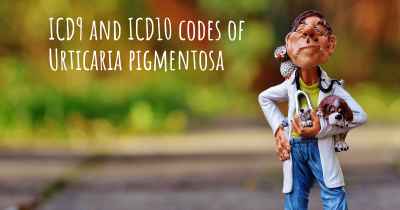What is the history of Urticaria pigmentosa?
When was Urticaria pigmentosa discovered? What is the story of this discovery? Was it coincidence or not?

Urticaria pigmentosa is a rare skin disorder characterized by the presence of brownish-red or yellowish-brown lesions on the skin. These lesions are caused by an excessive accumulation of mast cells, a type of white blood cell, in the skin. The condition is also known as cutaneous mastocytosis.
Historical Background:
The history of urticaria pigmentosa dates back to the late 19th century when it was first described by two dermatologists, Carl Jakob Adolf Eduard Darier and Urbain-Jean-Joseph Leblond. In 1887, Darier published a case report of a 14-year-old boy with multiple brownish-red spots on his skin. He referred to these spots as "urticaria pigmentosa" due to their resemblance to hives (urticaria) and the presence of pigmentation.
Early Research and Understanding:
Over the following decades, researchers made significant progress in understanding the underlying mechanisms and clinical features of urticaria pigmentosa. In the early 20th century, it was discovered that the lesions were caused by an abnormal accumulation of mast cells in the skin. Mast cells are responsible for releasing histamine and other chemicals during allergic reactions.
Identification of Mast Cells:
In the 1940s, researchers developed staining techniques to identify mast cells in skin biopsies. This allowed for more accurate diagnosis of urticaria pigmentosa and differentiation from other skin conditions. The characteristic appearance of mast cells under the microscope, known as "Darier's sign," became an important diagnostic feature.
Advancements in Mast Cell Research:
In the latter half of the 20th century, further advancements were made in understanding mast cells and their role in urticaria pigmentosa. Researchers discovered that mast cells carry a mutation in a gene called KIT, which is responsible for regulating cell growth and division. This mutation leads to the abnormal accumulation of mast cells in the skin.
Classification and Subtypes:
In 1978, the World Health Organization (WHO) classified mastocytosis, including urticaria pigmentosa, into different subtypes based on clinical and histological features. This classification system helped in better understanding the spectrum of mastocytosis and guiding treatment approaches.
Current Understanding and Treatment:
Today, urticaria pigmentosa is recognized as a form of cutaneous mastocytosis, which primarily affects the skin. It is most commonly seen in children but can also occur in adults. The characteristic lesions may appear as small bumps, plaques, or blisters, and can cause itching, flushing, and swelling.
While there is no cure for urticaria pigmentosa, treatment focuses on managing symptoms and preventing complications. Antihistamines are commonly prescribed to relieve itching and reduce the release of histamine from mast cells. In severe cases, medications that target mast cells, such as cromolyn sodium or systemic corticosteroids, may be used.
In conclusion, urticaria pigmentosa has a rich history of research and understanding spanning over a century. From its initial description as "urticaria pigmentosa" to the identification of mast cells and genetic mutations, significant progress has been made in unraveling the complexities of this rare skin disorder. Ongoing research continues to improve our understanding of urticaria pigmentosa and develop more effective treatment options for those affected.








